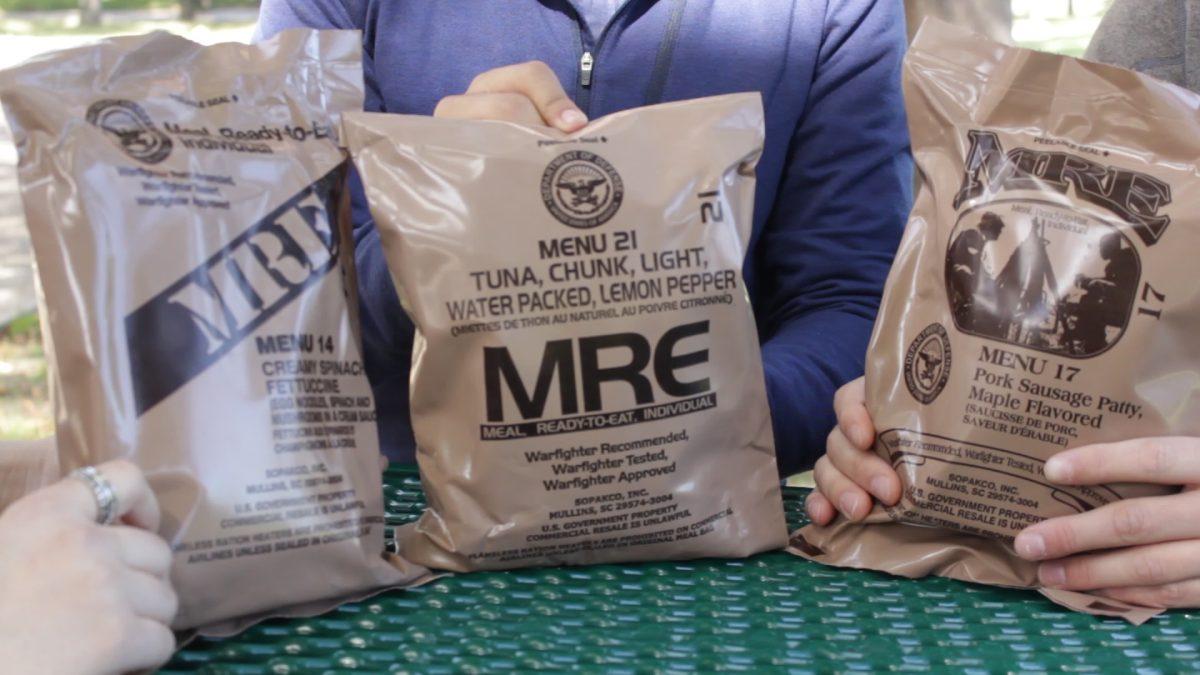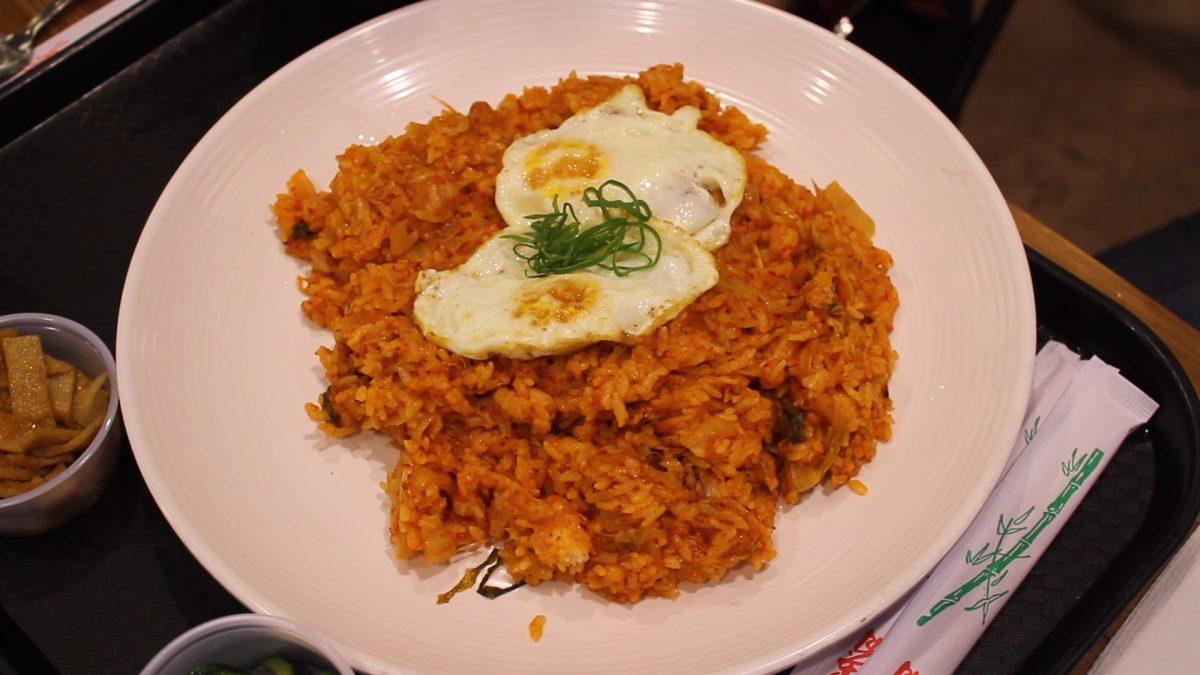
Two weeks ago, I thought military food was bland, tasteless and solely there to provide ample calories and nutrients for soldiers at war. While military food does serve the last purpose, it’s not actually as awful as I expected it to be.
Military food comes in the form of “meals ready to eat,” more commonly known as MREs. The first military food rations consisted of simple vegetables and meat and were introduced during the American Revolutionary War. During World War I, the meals became more diverse and contained canned meat, coffee, bread, salt and sugar. However, it wasn’t until 1963 when the Department of Defense developed the MREs we see today. MREs are more lightweight, portable and come in different varieties to prevent soldiers from getting tired of the same meal. These meals are meant to last and have a minimum shelf life of three years.
I was accompanied this time by Michael Stout, a former U.S. Marine and procurer of the MREs we’d be eating. I also invited Cris Puga, a current member of the U.S. Army on reserve and student worker at UTD’s Military and Veteran Center. Stout and Puga both delved into intense stories of their times in the military, the harsh nature of boot camp and the extreme conditions they were often put in on the job. Stout told me he’d eaten hundreds of MREs and said school cafeteria food was higher quality in comparison to the MREs. They both repeatedly told me not to expect much and that people from the military often hated the MREs after eating so many. Their stories didn’t diminish my excitement to try them at all.
MREs come in a vast range of menus. I had Menu 14, which contained creamy spinach fettucine as the main meal. I was pleasantly surprised by the tasty-sounding vegetarian options because I was expecting something like beans or bread. Everything was stored in vacuum-sealed packages or squishy plastic bags filled with liquid. My meal contained a bag of spinach fettucine, plain crackers, peanut butter, a protein bar, a chocolate protein shake, pretzel nuggets and some instant coffee. To heat up the meal, there was a special flameless ration heater bag included in the MRE. We filled each heater with water and inserted the main meal package inside. You had to prop the heater bag up against something in order for it to work. After five minutes, the bag started smoking, and much to my surprise, was actually quite hot.
The various sides were average and nothing special. However, eating the spinach fettucine was very strange. Michael instructed me to pour the contents of my meal into the bag that the MRE came in, which we folded and formed into a crude bowl. The spinach fettucine was cheesy, and the pasta had a decent texture, but it was also extremely salty and tasted a little metallic. Michael cautioned me not to eat the entire portion and to drink lots of water afterward because MREs contain a lot of sodium. However, creamy pasta happens to be my favorite food, and I really don’t have high standards, so I finished it.
Michael and Cris talked about how they often had as little as five minutes to eat their MREs, and they’d usually just eat whatever they could as fast as possible to keep moving. They weren’t the most unpleasant food I’ve had (honestly, school cafeteria meals weren’t much better), but being able to assemble my meal and eat pasta out of a bag was a unique experience all on its own. I couldn’t imagine having to make my food like this and eat it on the go, especially with the very intense and hectic sort of lifestyle people in the military have. By the time we finished our meal and conversation, I had a renewed respect for those serving in the armed forces.

















